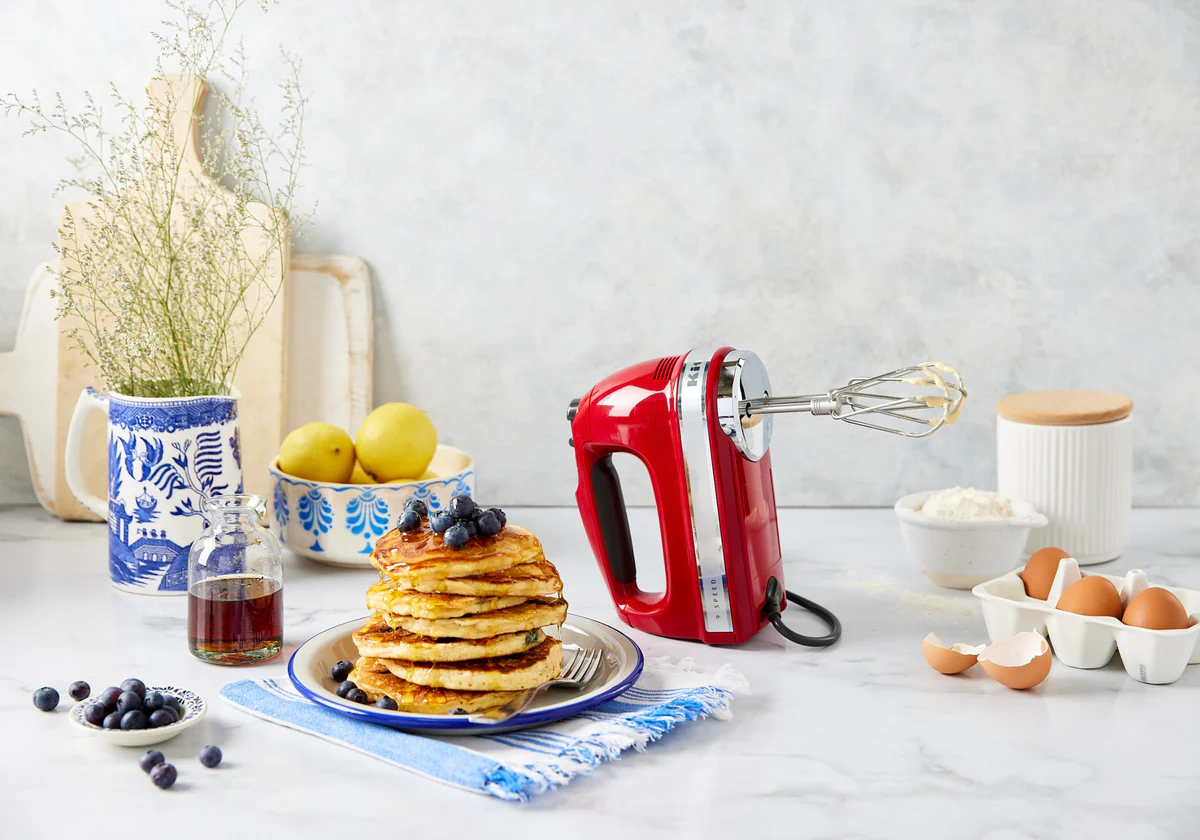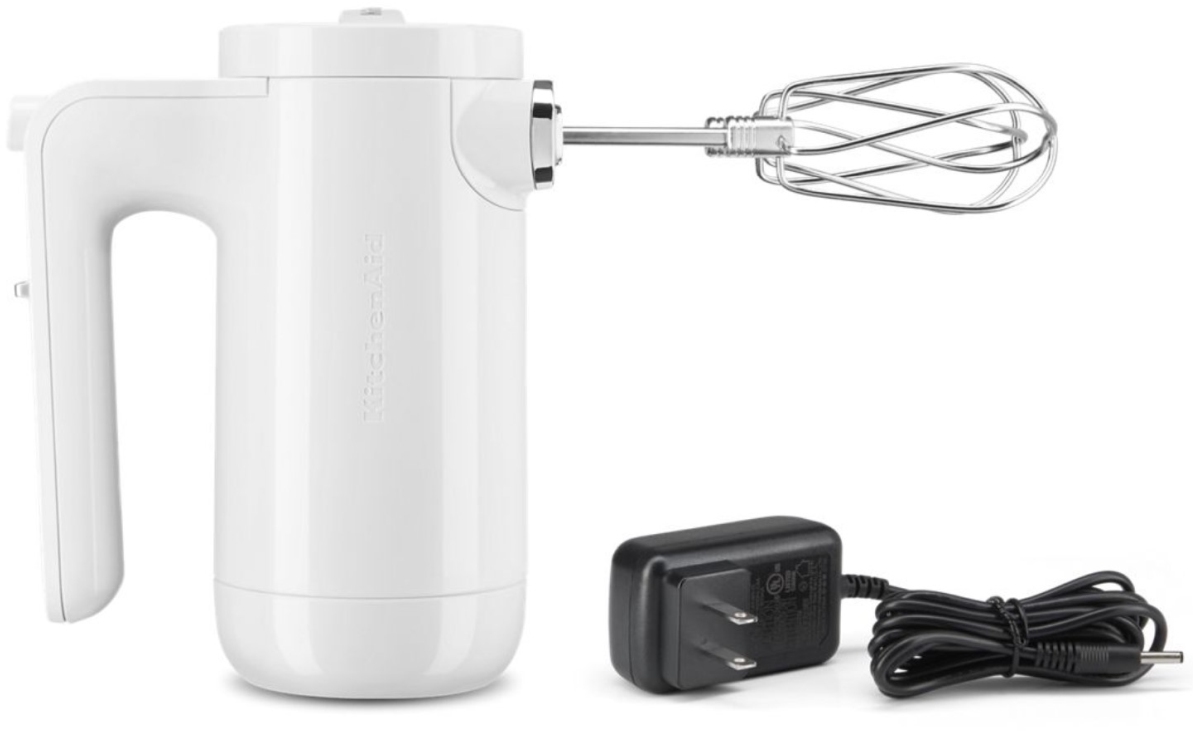Let’s be honest, we’ve all been there. You’re staring at a recipe for a glorious, cloud-like pavlova or a delicate angel food cake, and it all hinges on one crucial step: perfectly whipped egg whites. Get it wrong, and you’re left with a sad, weepy puddle. Get it right, and you’re a culinary hero. So, the big question is, when you grab your trusty hand mixer, What Is The Best Attachment For Egg Whites to guarantee success? The answer might seem simple, but understanding the why is the secret to unlocking baking perfection every single time.
As someone who has tested more hand mixers than I can count, I’ve seen firsthand how the right tool can transform a frustrating task into an absolute joy. It’s not just about having a motor; it’s about having the right attachment to do the heavy lifting, or in this case, the light and airy lifting.
The Undisputed Champion: The Balloon Whisk
If your hand mixer came with multiple attachments, the one you’re looking for is the balloon whisk. It’s the large, bulbous-shaped whisk with many thin, flexible wires. This isn’t just the best option; it’s the only option you should seriously consider for this specific job.
The balloon whisk is a masterpiece of kitchen engineering, designed for one primary purpose: incorporating as much air as possible into a liquid. When you’re dealing with egg whites, air is your best friend. It’s the key ingredient that transforms them from a clear, viscous liquid into a stable, white foam that can hold its shape.
So, Why Does the Whisk Work So Well? The Science Bit
Ever wondered what’s actually happening in that bowl? It’s pretty fascinating. Egg whites are about 90% water and 10% protein. When you start whisking, you’re doing two things simultaneously:
- Denaturing Proteins: The physical force of the whisk’s wires whipping through the egg whites unfolds the tightly coiled protein strands.
- Incorporating Air: As these proteins unfold, they create a network. The many fine wires of the balloon whisk are exceptional at trapping tiny air bubbles within this network.
Think of the balloon whisk as a tiny army of air-trappers. Each wire slices through the liquid, creating a pocket for air to enter. The more wires, the more efficient the process. This network of protein-coated air bubbles is what gives whipped egg whites their volume and structure.
Can You Use the Standard Beaters in a Pinch?
Most hand mixers come with a pair of standard attachments, often called flat beaters or turbo beaters. These are brilliant for general-purpose tasks like creaming butter and sugar for cookies or mixing cake batter. But when it comes to whipping egg whites, they are significantly less effective.
So, what happens if you try?
- It takes much longer: The beaters are designed more for combining and mixing than for aerating. They have fewer, thicker blades, which act more like paddles. They’ll get the job done eventually, but it will take a lot more time and patience.
- The volume will be lower: Because they are less efficient at incorporating air, you’ll likely end up with a foam that is less voluminous and potentially less stable than what you’d achieve with a balloon whisk.
- The texture is coarser: The foam created by beaters often has larger, less uniform air bubbles, which can result in a less delicate final product.
According to professional pastry consultant Amelia Thorne, “Using standard beaters for egg whites is a common rookie mistake. You’re essentially trying to use a shovel for a task that requires a sieve. The balloon whisk is purpose-built for aeration, and the difference in your meringue or soufflé will be night and day.”
If the standard beaters are your only option, you can still make it work, but be prepared for a longer whipping time and a potentially denser result. Make sure to use a higher speed to compensate.
How to Whip Egg Whites Perfectly with Your Hand Mixer
Now that you know what is the best attachment for egg whites is the balloon whisk, let’s talk technique. The right tool is only half the battle.
- Start with a Spotless Bowl: Any trace of fat or grease is the enemy of whipped egg whites. It prevents the proteins from forming a stable foam. Make sure your mixing bowl and your whisk attachment are impeccably clean. It’s a good habit to wipe them down with a little white vinegar or lemon juice and then dry them thoroughly. A glass or metal bowl is always preferable to plastic, which can harbor residual grease.
- Use Room Temperature Eggs: Cold egg whites are more viscous and harder to whip. Let your eggs sit out on the counter for about 30 minutes before you start. They will whip up faster and achieve greater volume. Separating them is also easier when they’re cold, so separate them first and then let the whites come to room temp.
- Begin on a Low Speed: Don’t just crank the mixer to high from the get-go. Start on a low speed until the egg whites become foamy and bubbly, like soap suds. This initial stage builds a stable foundation of small bubbles.
- Increase the Speed: Once foamy, increase the speed to medium-high. You’ll see the whites start to increase in volume and turn opaque.
- Achieve Soft Peaks: This is the stage where if you lift the whisk out of the whites, the peak that forms will softly curl over on itself, like a gentle wave. This is perfect for folding into mousses or soufflés.
- Add Sugar Gradually (If a recipe calls for it): If you’re making meringue, now is the time to add your sugar, but do it slowly, one tablespoon at a time, while the mixer is running. This allows the sugar to dissolve properly and helps create a very stable, glossy foam. Adding it all at once can deflate your whites.
- Whip to Stiff Peaks: For meringues and pavlovas, you’ll need stiff peaks. Continue whipping on high speed after the sugar is incorporated. You’ll know you’re there when you lift the whisk and the peak stands straight up, firm and proud, without curling over. The whites should look thick and glossy. Be careful not to over-whip, or they can become grainy and separate.
Hand Mixer vs. Stand Mixer: Is There a Difference?
This is a classic kitchen debate. For whipping egg whites, both are excellent tools. A stand mixer, with its powerful motor and large whisk attachment, can handle large quantities effortlessly and frees up your hands. However, a quality hand mixer gives you more control. You can move the bowl around, ensuring the whisk reaches every bit of egg white at the bottom. For smaller quantities (1-4 egg whites), a hand mixer is often faster and more convenient. If you’re looking for a versatile tool, our [Hand Mixer Guide]
Quick Checklist for Choosing a Hand Mixer for Whipping
- Must-Have Attachment: Does it come with a balloon whisk? This is non-negotiable.
- Variable Speeds: Look for a mixer with at least 5 speeds, including a slow-start function to prevent splattering.
- Adequate Power: A motor between 200-250 watts is plenty for tasks like whipping egg whites.
- Ergonomics: Is it comfortable to hold? You might be holding it for several minutes.
Frequently Asked Questions
What is the best attachment for egg whites on a hand mixer?
The best attachment is unequivocally the balloon whisk. Its numerous thin wires are specifically designed to incorporate the maximum amount of air into the egg whites, creating a light, voluminous, and stable foam far more effectively than standard beaters.
How long does it take to whip egg whites to stiff peaks with a hand mixer?
Using room temperature egg whites and a balloon whisk, it typically takes 4 to 6 minutes to reach stiff, glossy peaks. The exact time will depend on the power of your mixer, the number of egg whites, and the humidity in your kitchen.
What’s the difference between soft peaks and stiff peaks?
Soft peaks are achieved when you lift the whisk and the tip of the foam curls over on itself. They are soft and billowy. Stiff peaks (or firm peaks) stand straight up when the whisk is lifted, holding their shape without collapsing.
Can I use the regular flat beaters if I don’t have a whisk attachment?
Yes, you can use them in a pinch, but it’s not ideal. It will take significantly longer to achieve the desired volume, and the resulting foam may be less stable and not as light as what you would get with a proper balloon whisk.
Why won’t my egg whites whip up?
The most common culprits are traces of fat or yolk in the whites, an unclean bowl or whisk, or using cold egg whites. Even a tiny speck of yolk contains fat, which will prevent the foam from forming. Always ensure your equipment is spotless.
The Final Whisk
So, there you have it. When faced with the challenge of whipping egg whites, the answer to what is the best attachment for egg whites is crystal clear: the balloon whisk is your best friend. It’s the tool designed by science and experience to give you those beautiful, airy results that are the foundation of so many incredible desserts. By pairing this perfect attachment with the right technique, you’ll be well on your way to conquering meringues, mousses, and soufflés with confidence. Now go forth and whip it good! I’d love to hear about your baking successes in the comments below.
